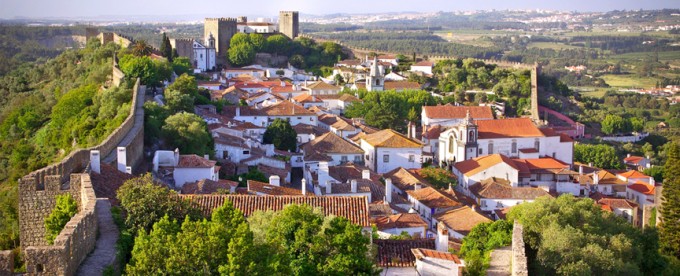Golf
Praia D'El Rey is arguably one of the most stunning golf courses in Europe. Set among extensive pine forests and undulating dunes, with spectacular views over the Atlantic and the Berlengas Islands beyond.
The 18-hole golf course was designed by the renowned American golf architect Cabell B.Robinson and was inaugurated on 14th June 1997. Deep bunkers, sloping greens and sandy dunes contrast sharply with the lush fairways, making it the complete golfing challenge.
The 18-hole Championship Golf course of Bom Sucesso designed by the world-renowned architect Donald Steel has opened to the public very recently.
Bom Sucesso is a PAR 72 golf course with an area exceeding 600 thousand sqm. The first 9 holes are played on a level part of the terrain while the second nine are located on uneven terrain, and are therefore quite spectacular. With a great site, the Bom Sucesso golf course takes full advantage of a series of spectacular views, some are breathtaking and others just subtly attractive.
It has not been too difficult to transform a location of such natural beauty into this pleasant Botado nine hole course. Built near the dunes of Consolação beach and the fishing port of Peniche, the Botado Golf Course, with its six lakes and big bunkers runs parallel to the beach for two and a half kilometres.
The Botado Golf Course takes advantage of the rolling dunes and offers the additional challenge of seven strategically located stretches of water. Because of this fact every single golf match game is a challenge to golfers’ skills.
Beaches
The D’el Rey Beach is limited by the dunes and is integrated in a resort, with the same name of this beach and it offers a set of restaurants and support services. This beach offers conditions for the practice of water sports.
Bom SucessoThe Bom Sucesso Beach is an extensive sandy beach since the Óbidos Lagoon to the Atlantic Ocean. This beach is in front of Foz do Arelho, in Caldas da Rainha, being separated by sandy islets. This beach is sought by many families with children.
Baleal & SupertubosKnown as The Wave Capital, Peniche has a range of beaches for every taste and for everyone, to water sports lovers, families, children to young people, to quiet and calm beaches to higher wave conditions, perfect for surfers.
The Baleal is an extensive sandy beach surrounded by big dunes, being divided by a road that unites the small peninsula to the Baleal, forming two small bays. The Baleal is considerate a treasure for the diving lovers and the water sport lovers, but it is also sought by families and young people. The smaller island is the Baleal fishermen villa.
The Supertubos Beach or Medão Beach is located south of Peniche and it is considerate a beautiful beach, surrounded by gorgeous dunes and sand, lapped by excellent waves, being sought by surfers and fishing lovers. This beach is one of the selective beaches for the event RIP Curl Pro Portugal.
In Caldas da Rainha there are two beaches, the Foz do Arelho that is surrounded by the Atlantic Ocean and the Óbidos Lagoon, and these tow systems together with the natural landscape, the cliffs and fauna and flora, conceive the Foz do Arelho a paradise for the families, water sport lovers or for those who just want a quiet and tranquil in the sun. Both the sea and the lagoon are guarded.
The other beach is Salir do Porto, it is a very discrete beach, accompanied with a sand dune, very sought by the most curious people that climb this giant dune, rolling down after they reached the top.
The São Martinho do Porto Beach is in the São Martinho bay and its waters are appropriate for long baths and for children to play, a good beach for families with children. A guarded beach in the summer, accompanied with the blue flag beach, a certificate of trust for those who want a good beach for their children.






